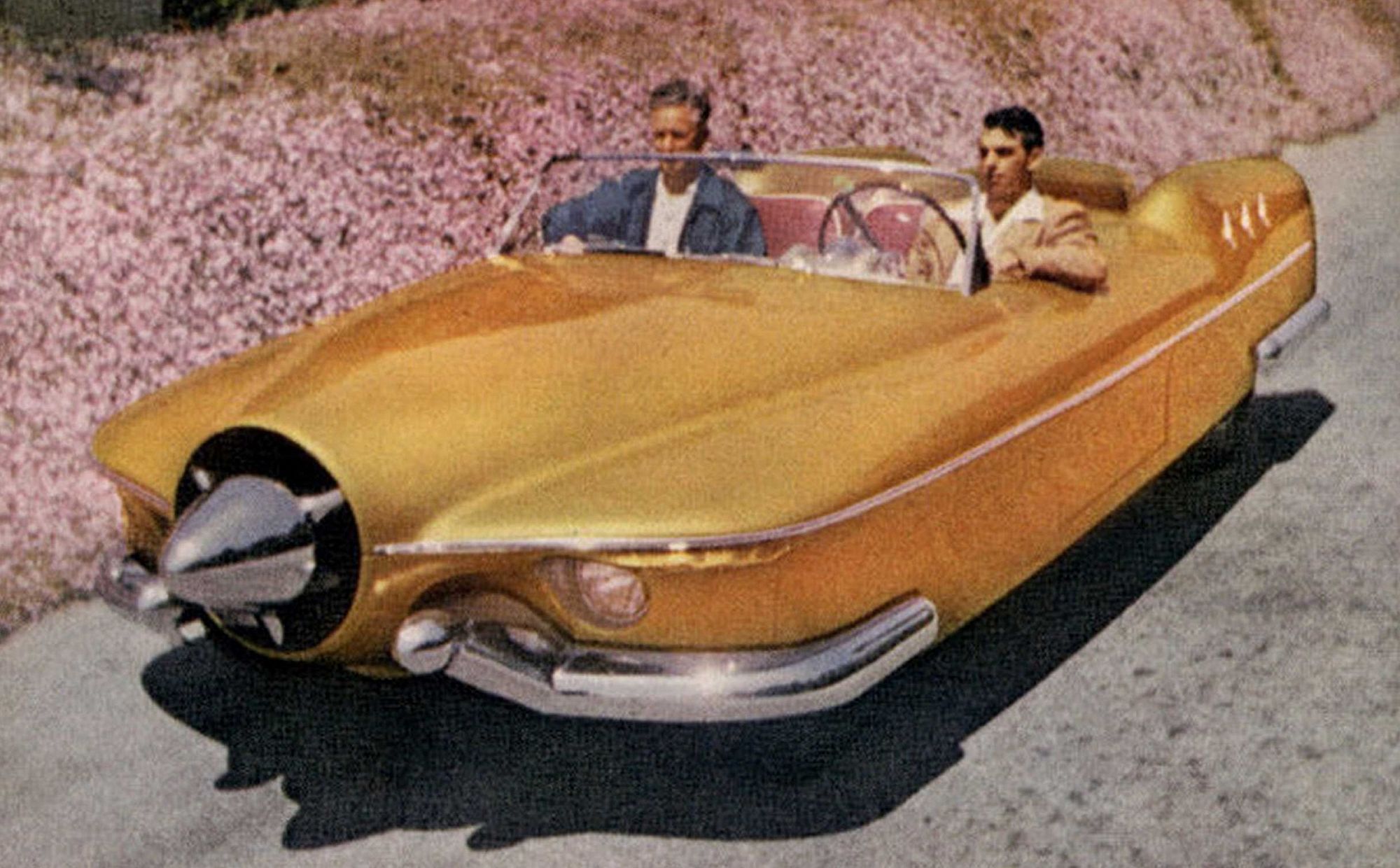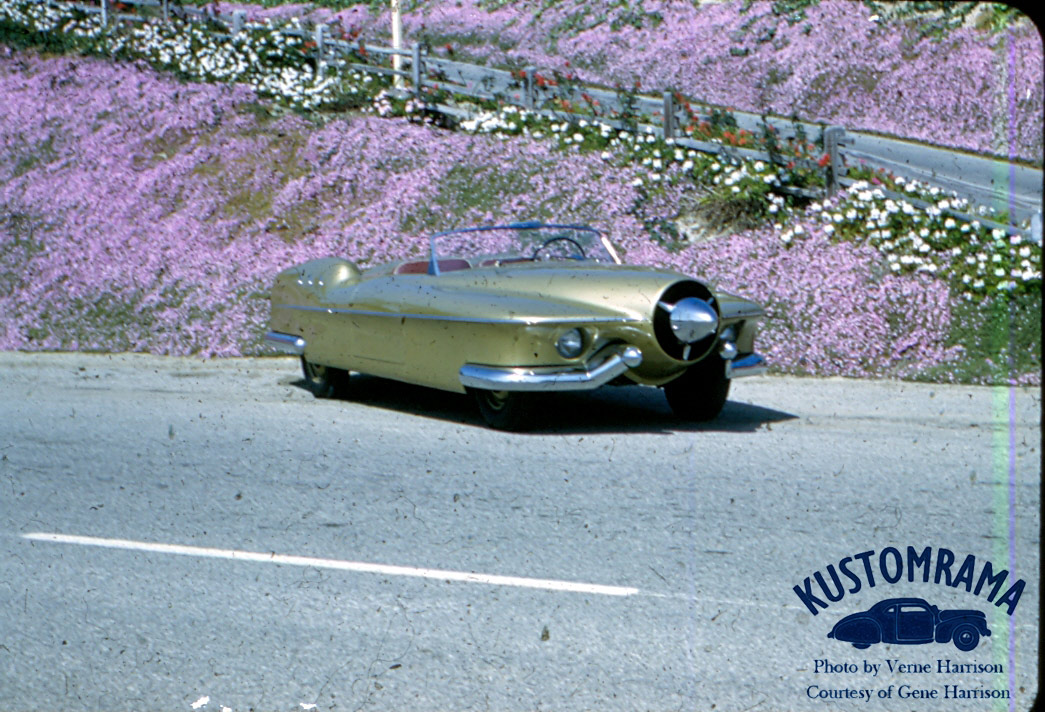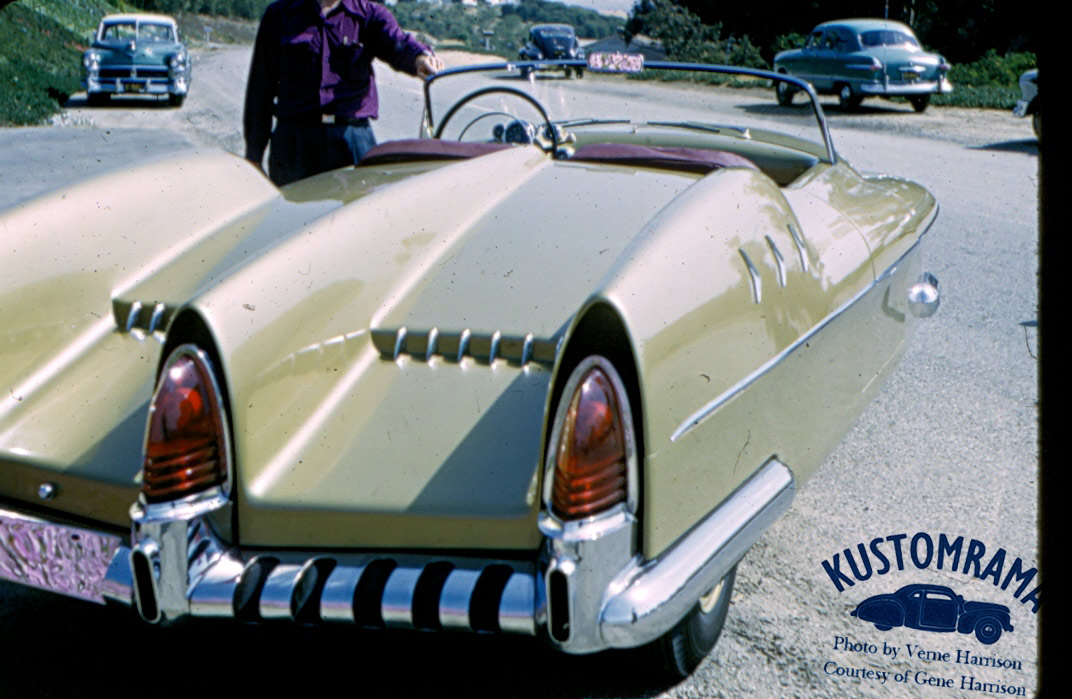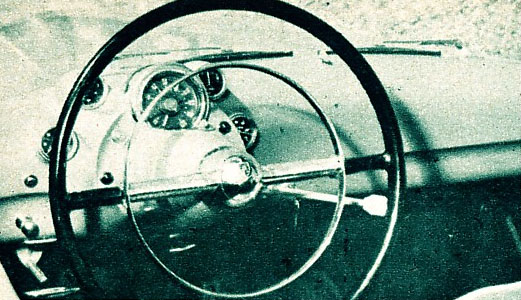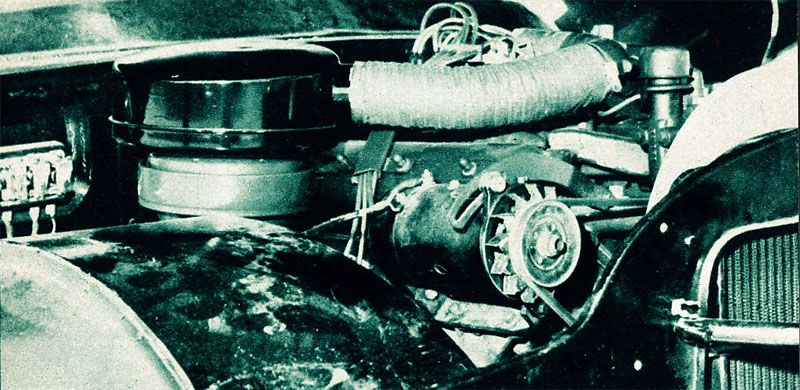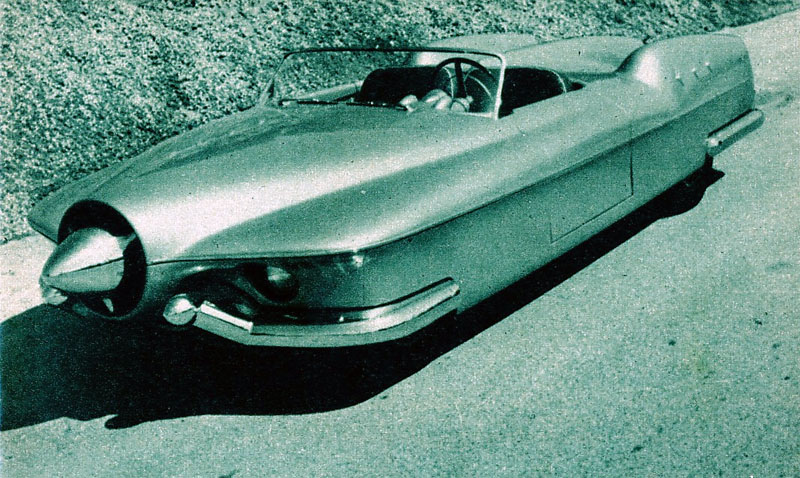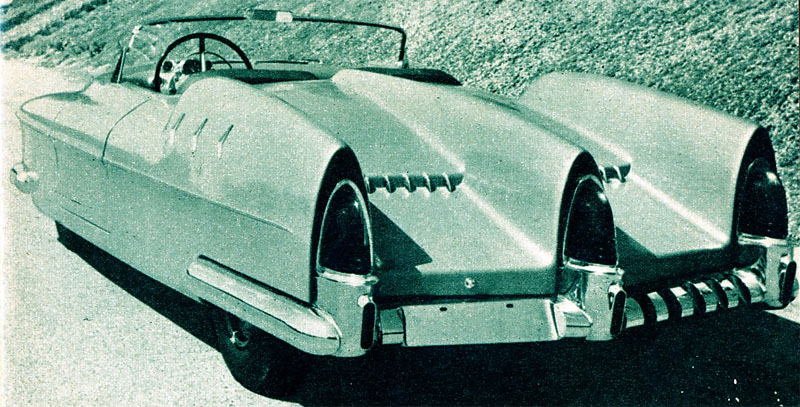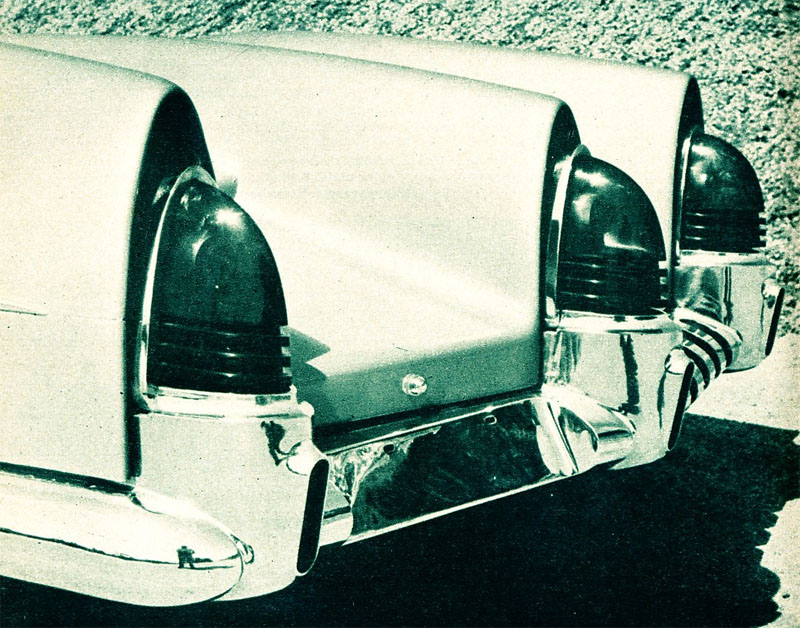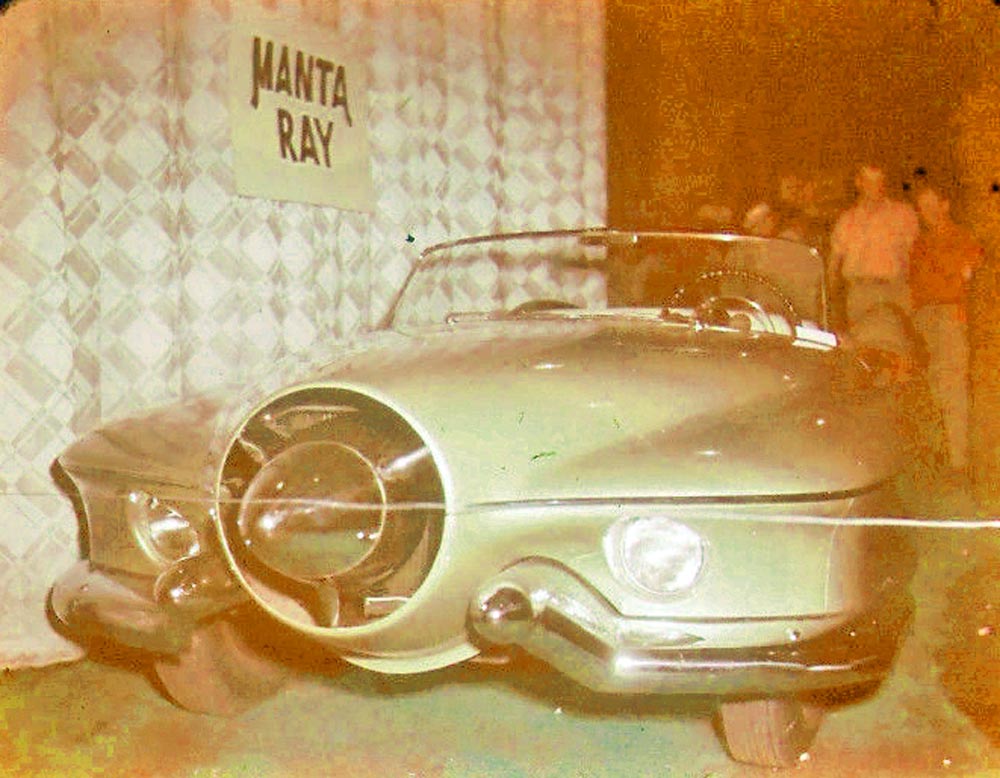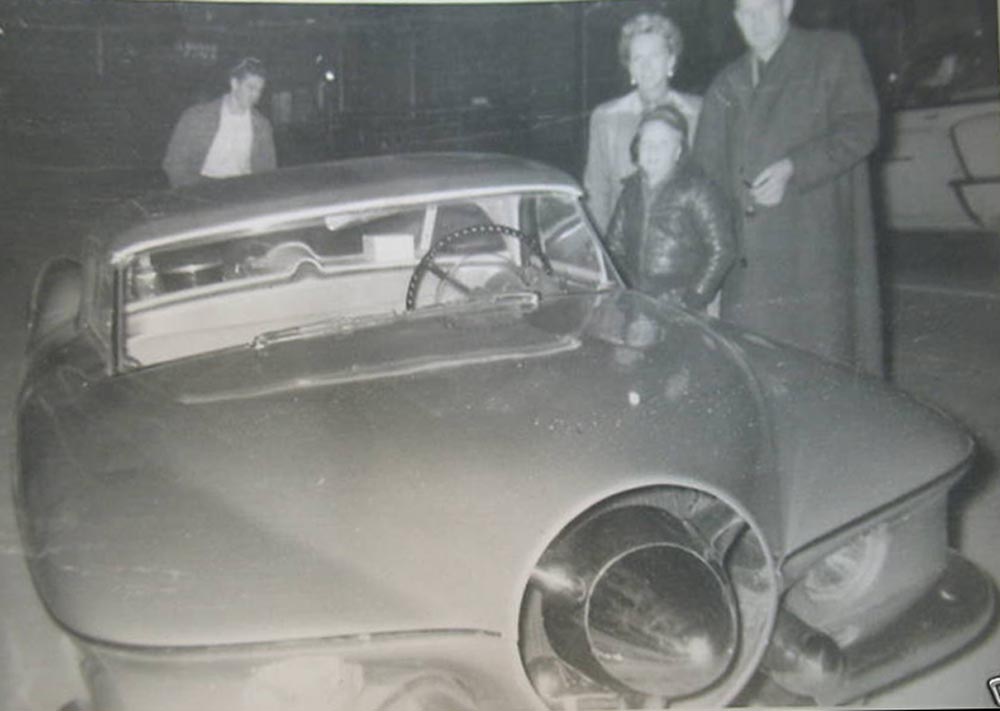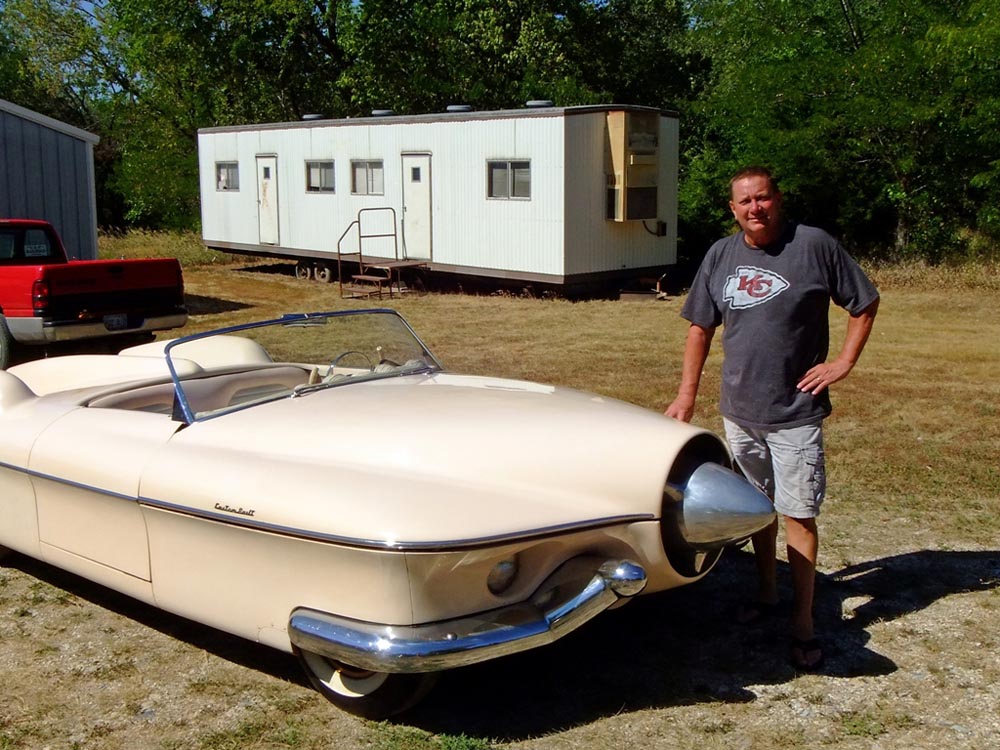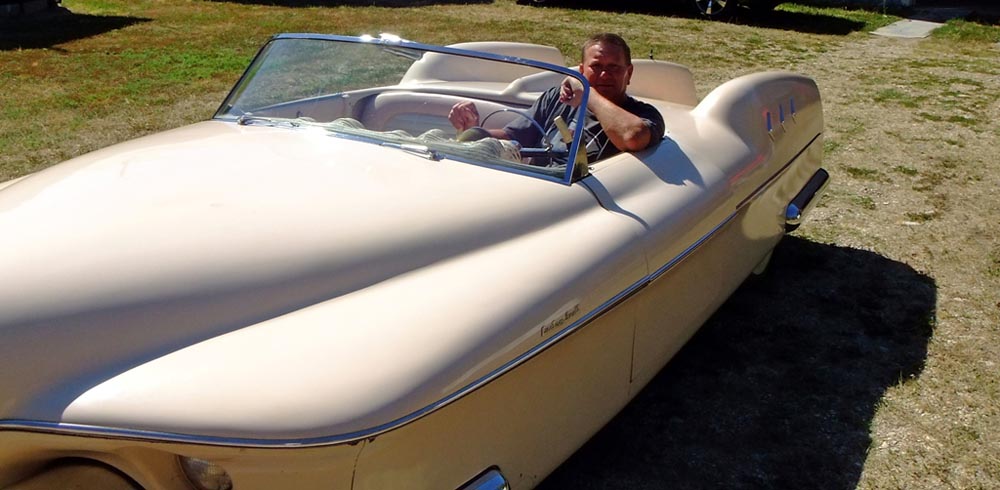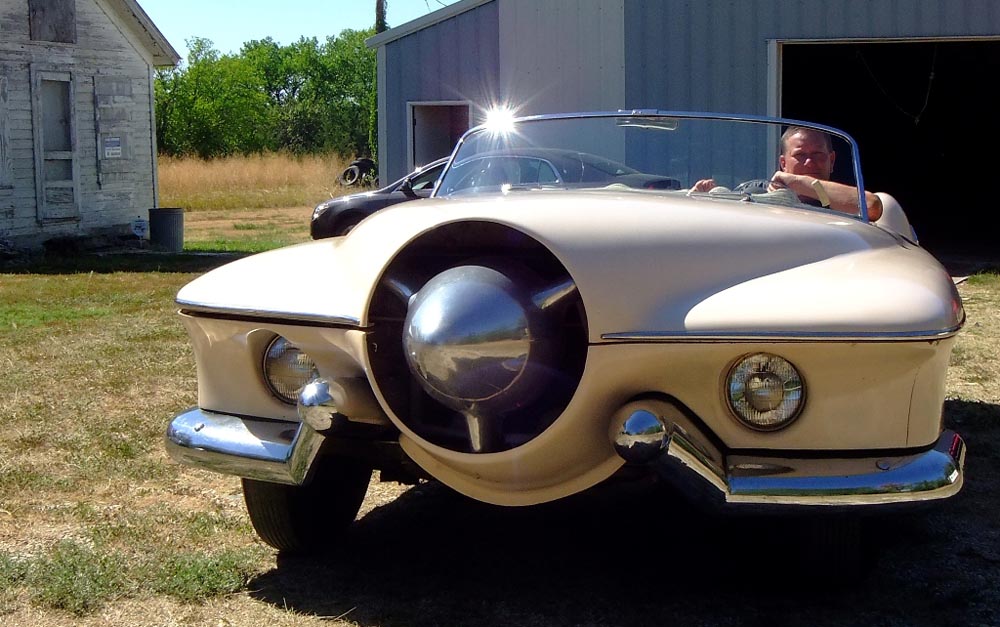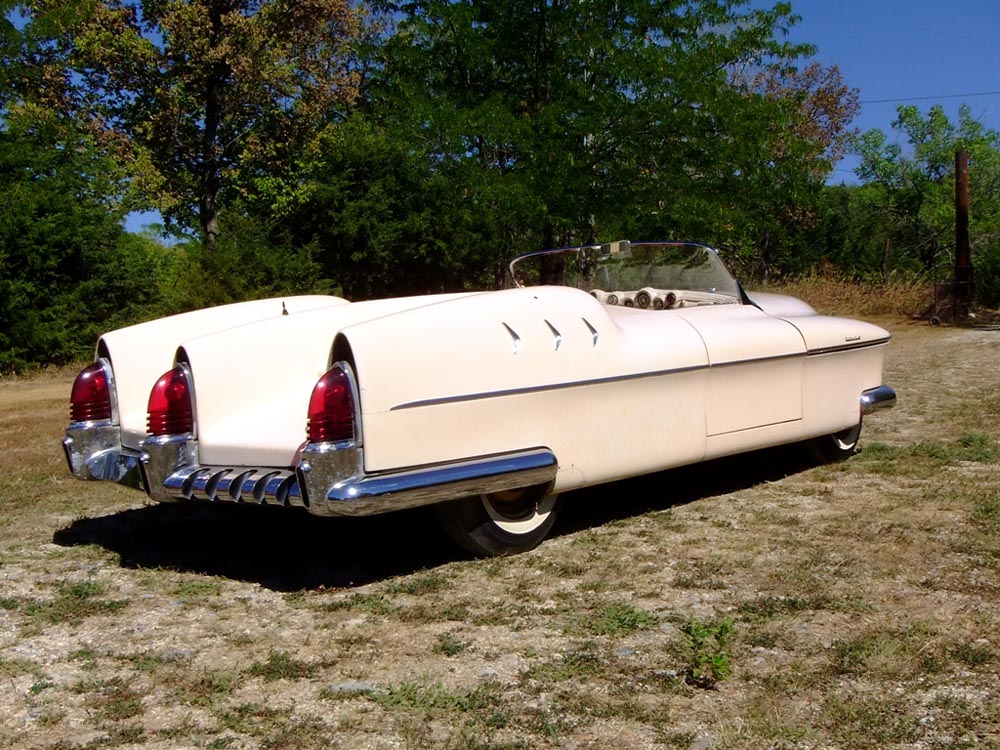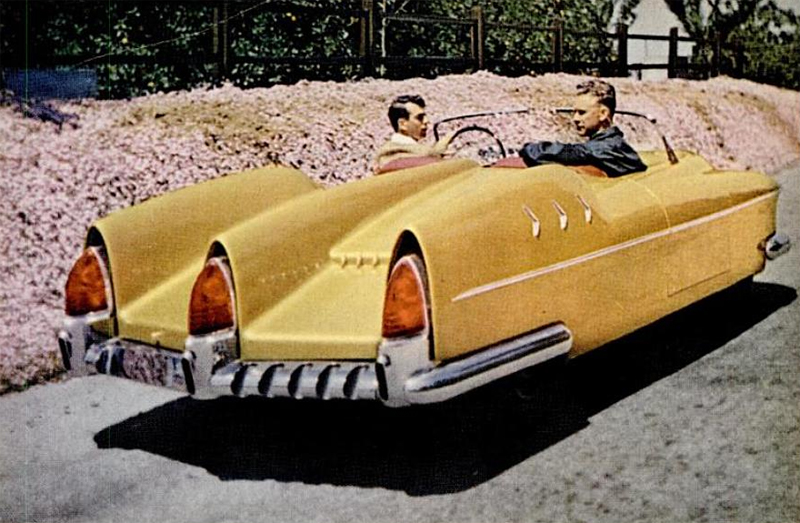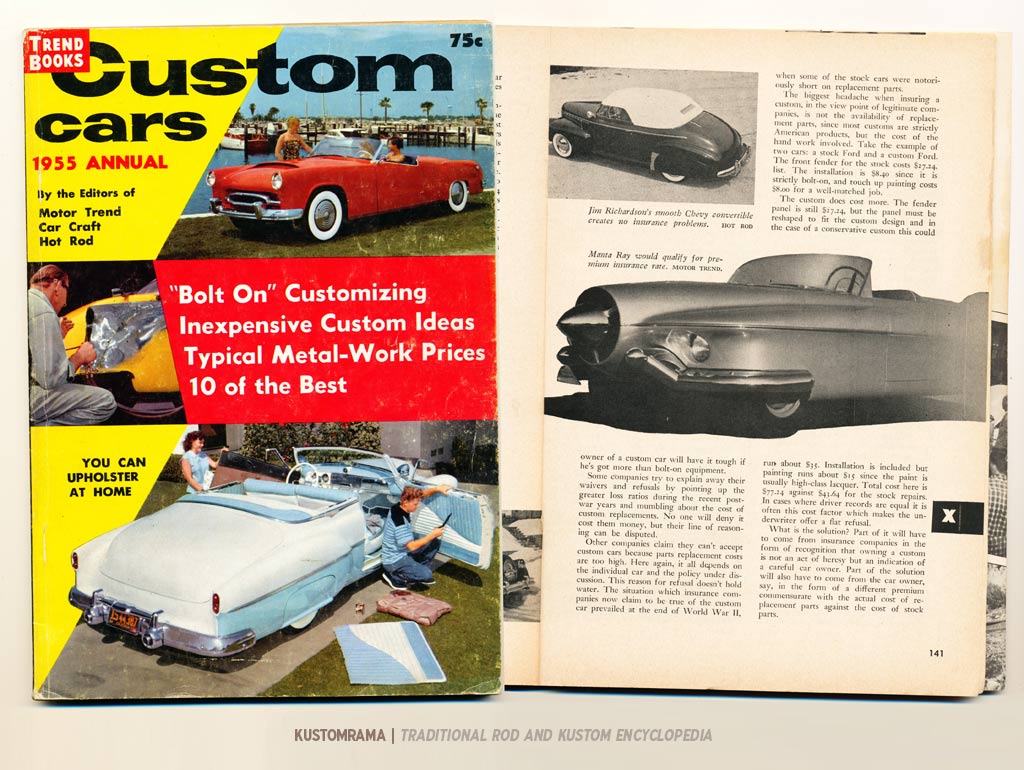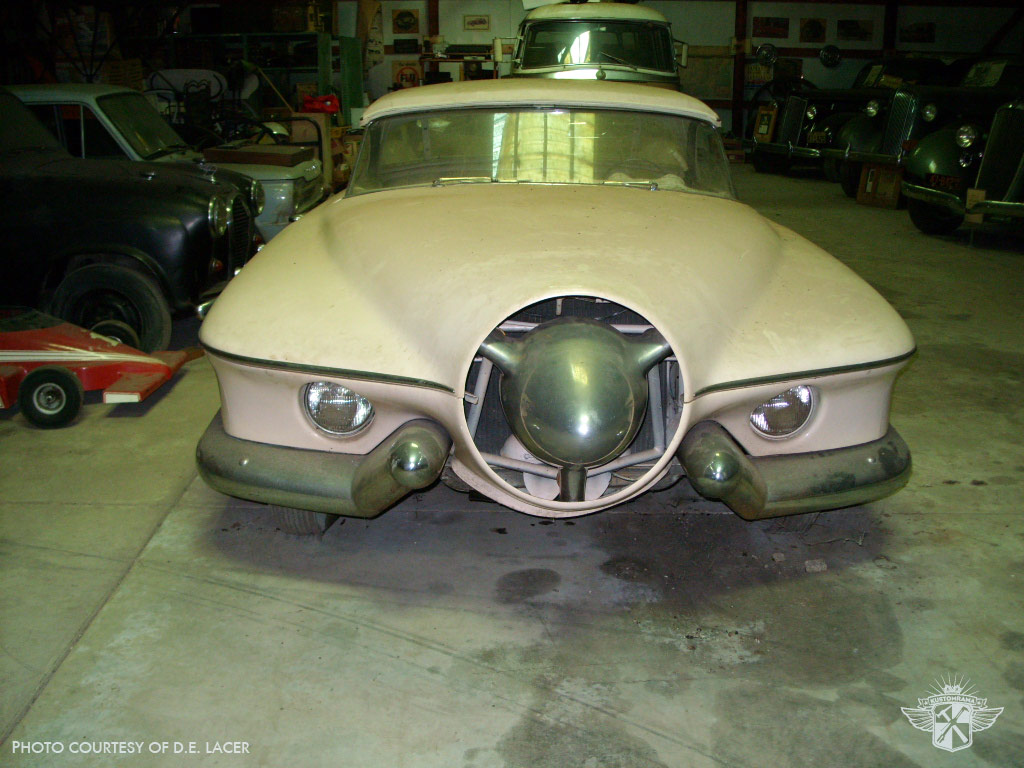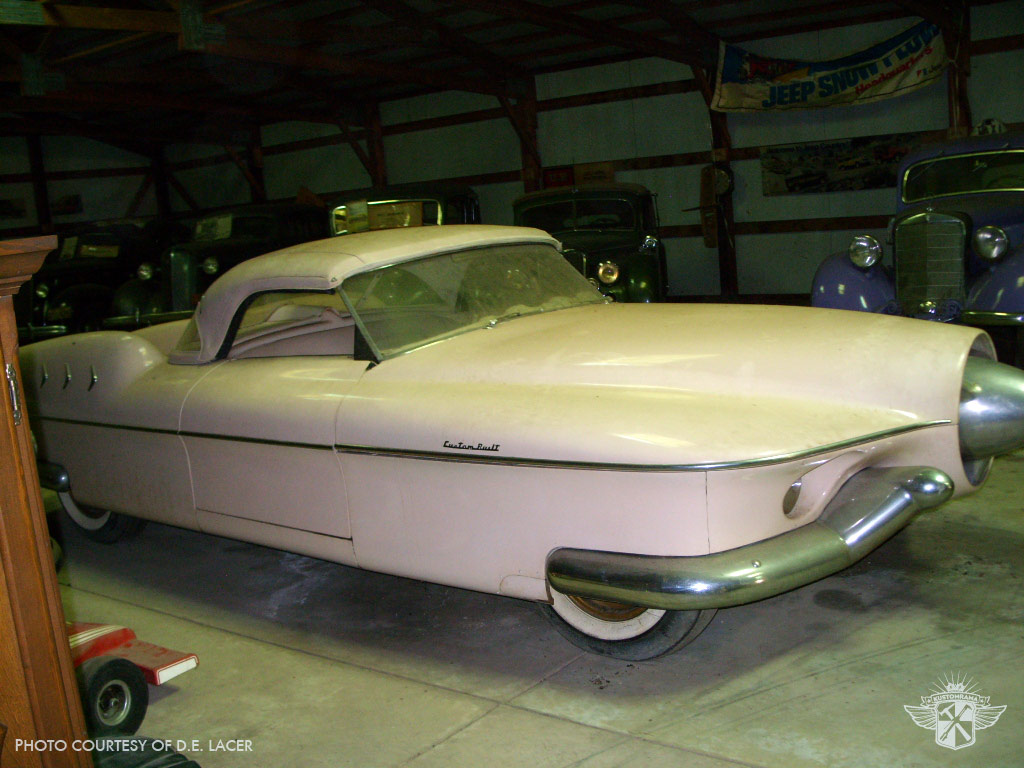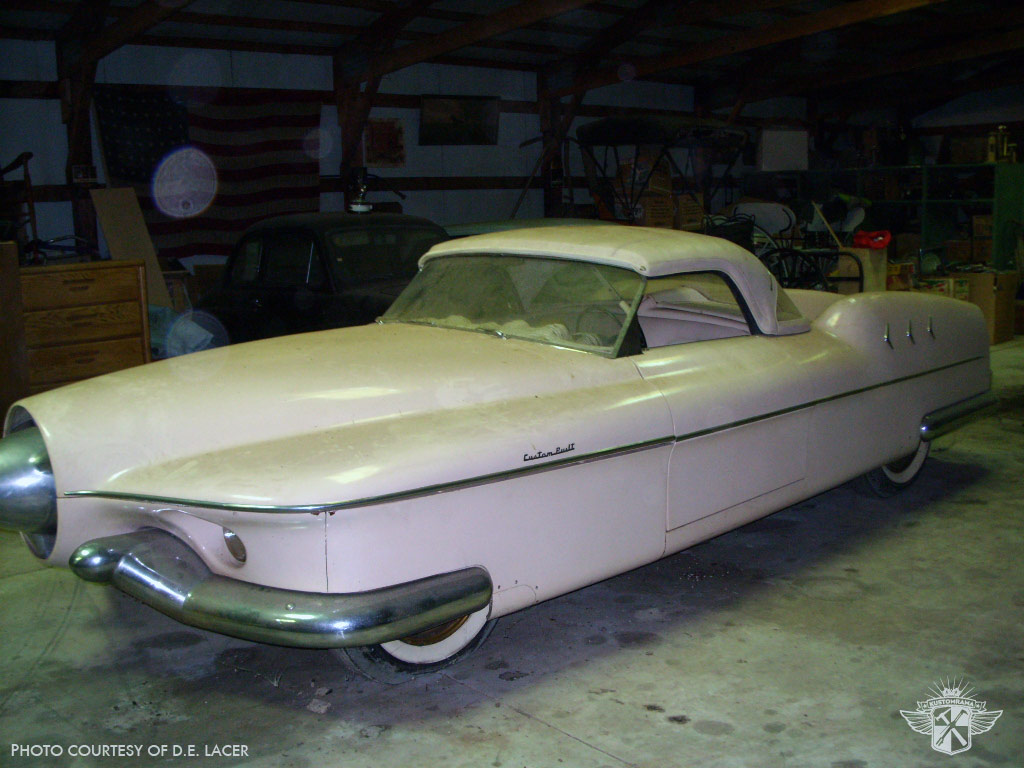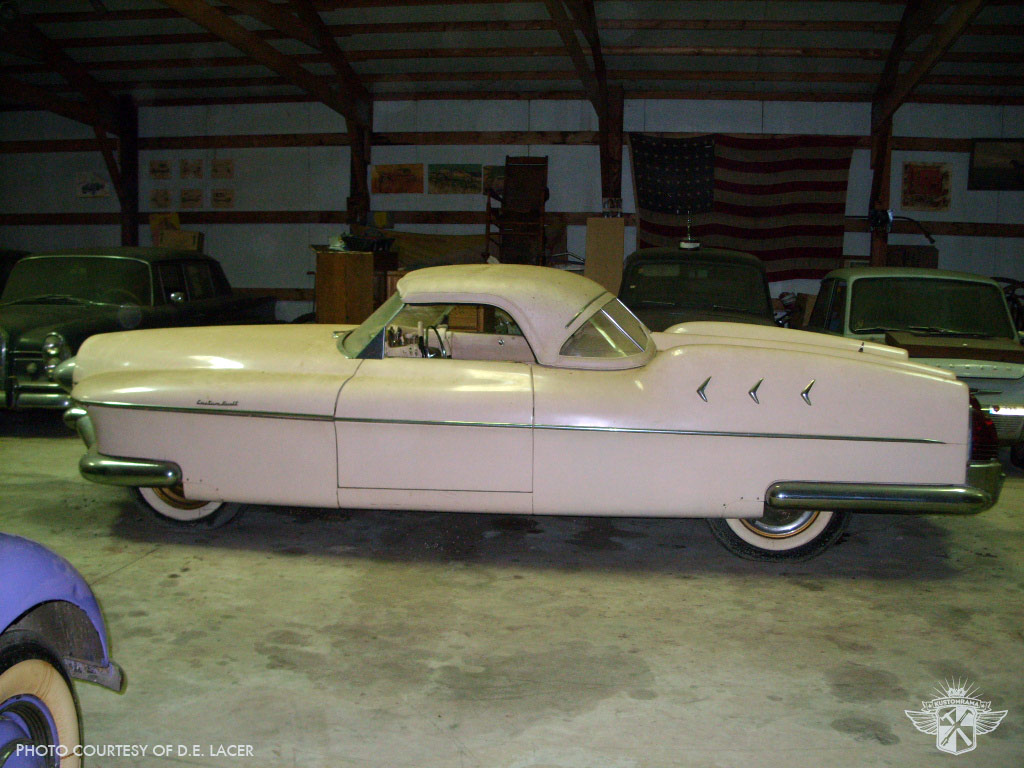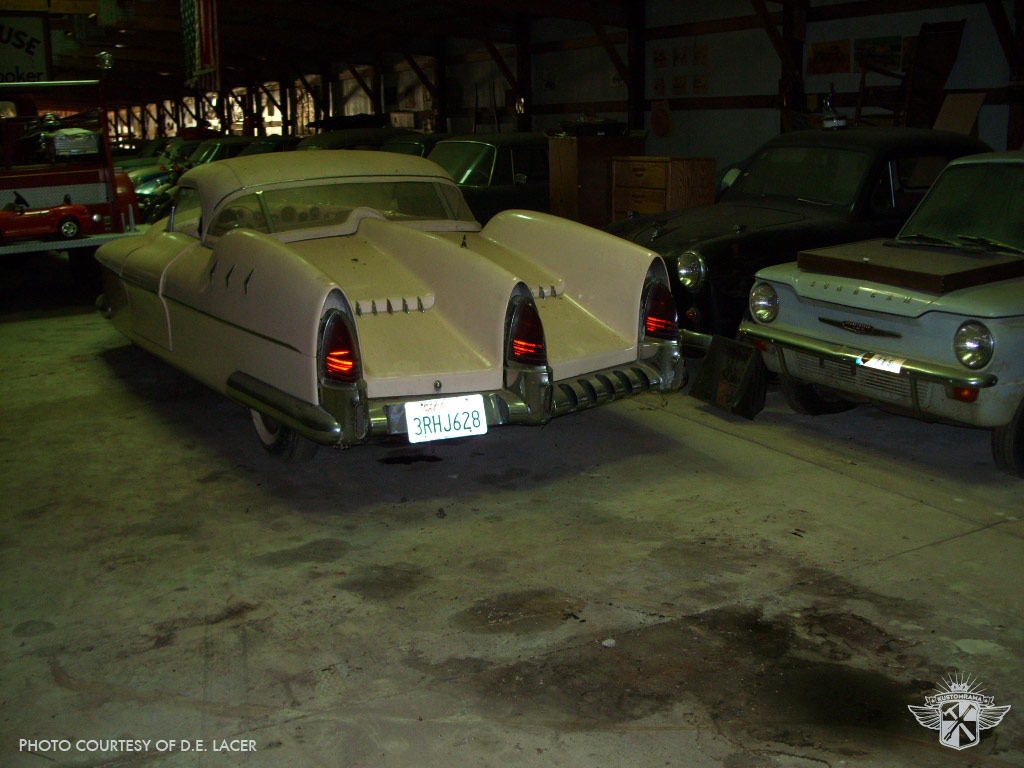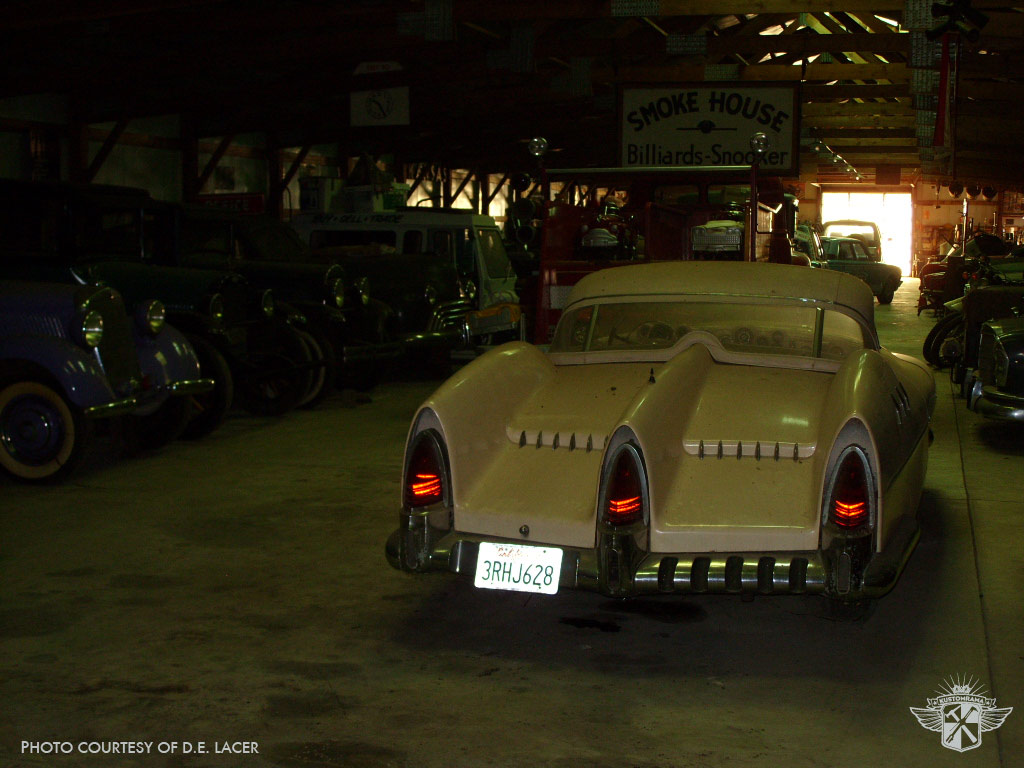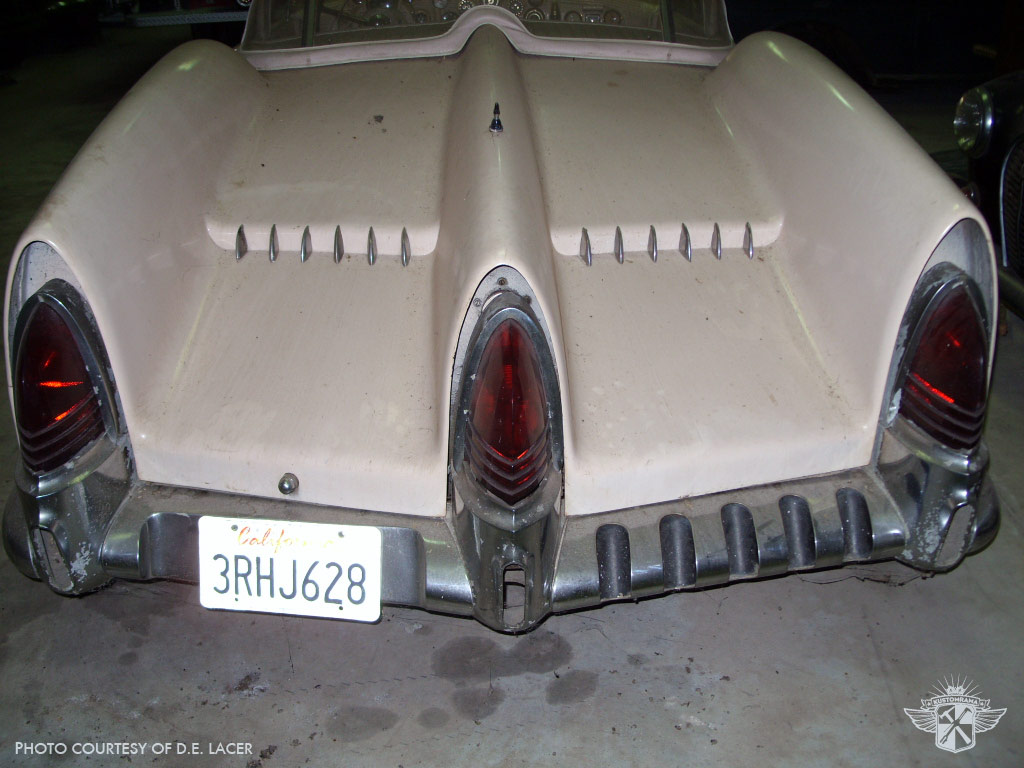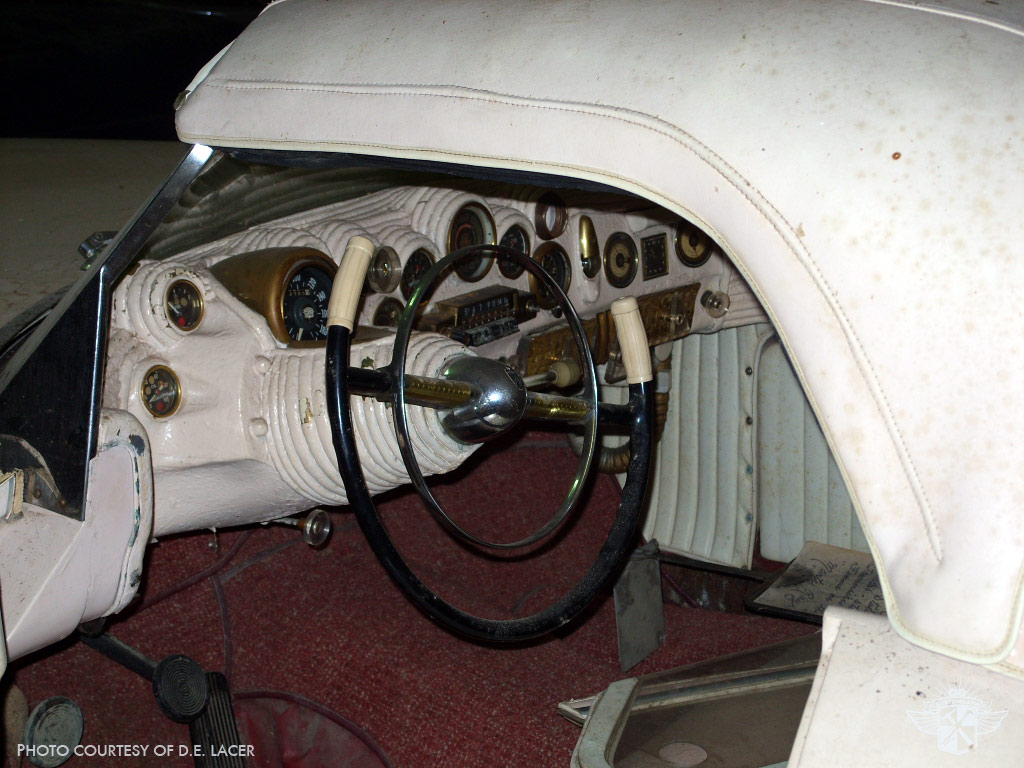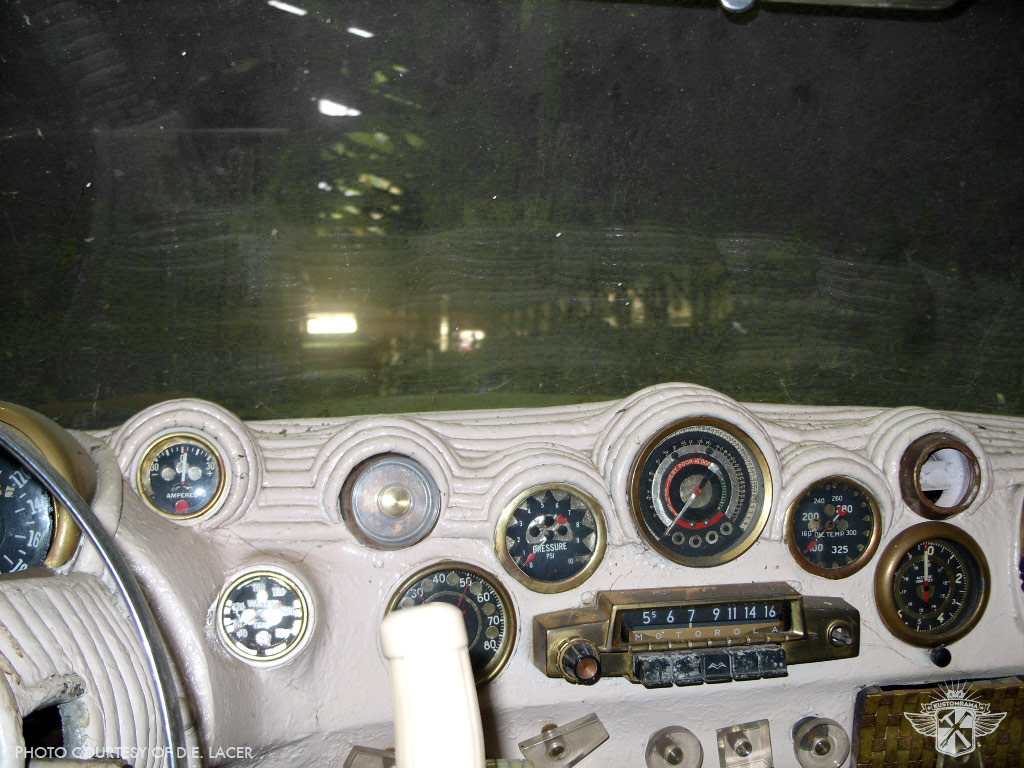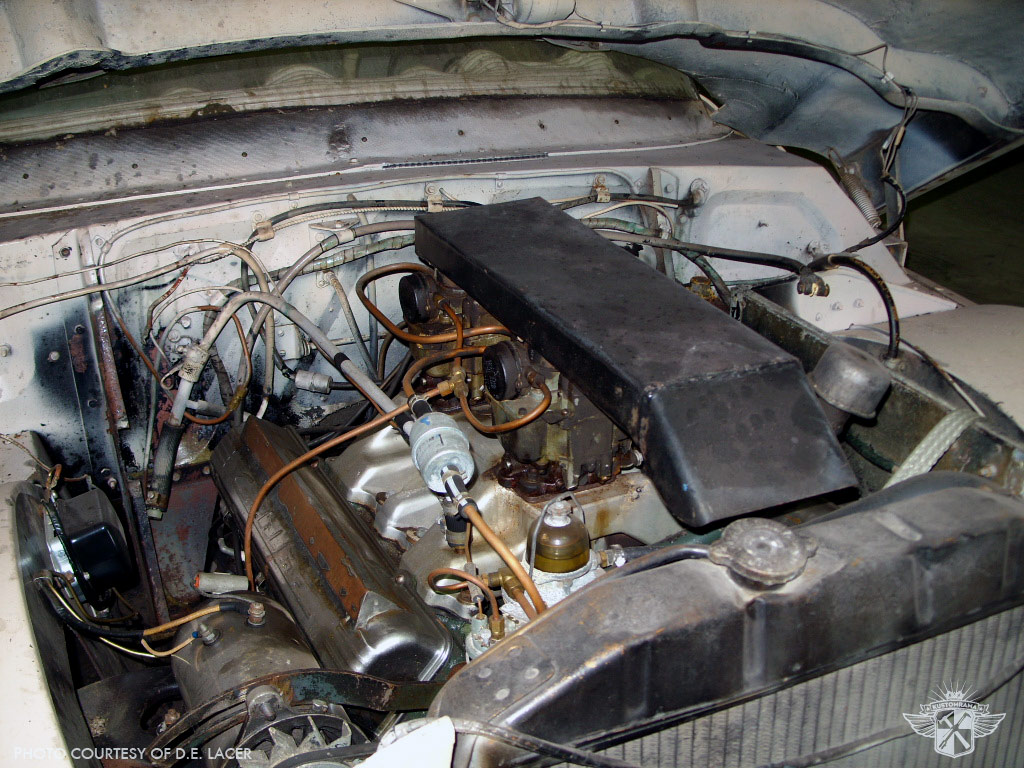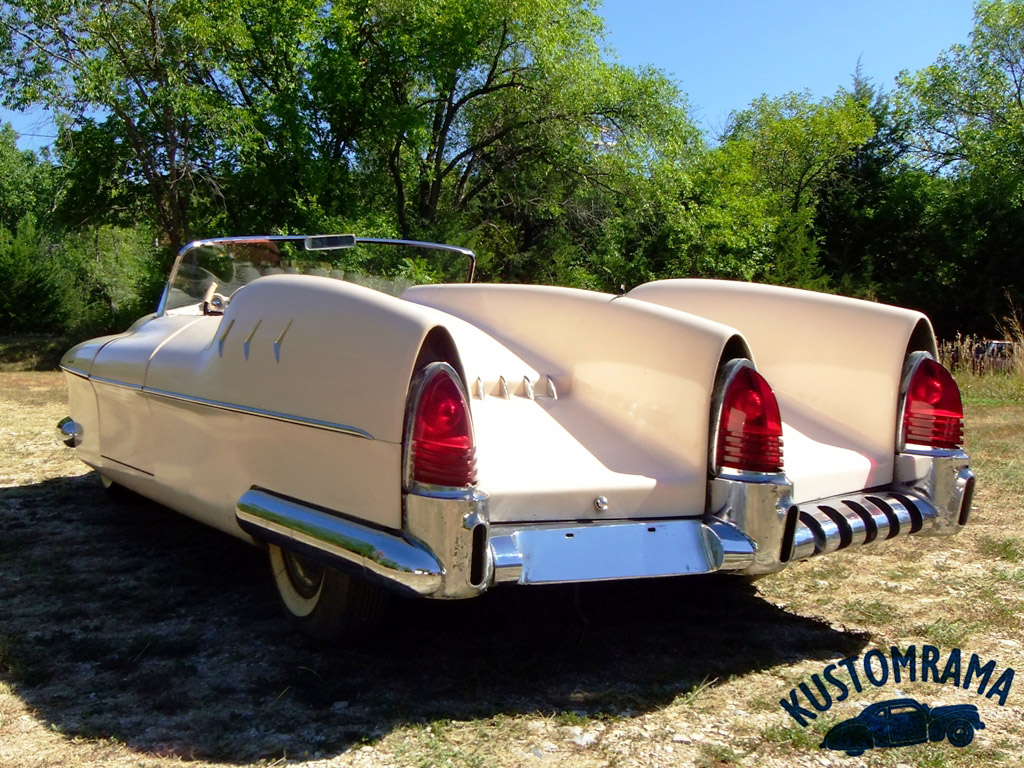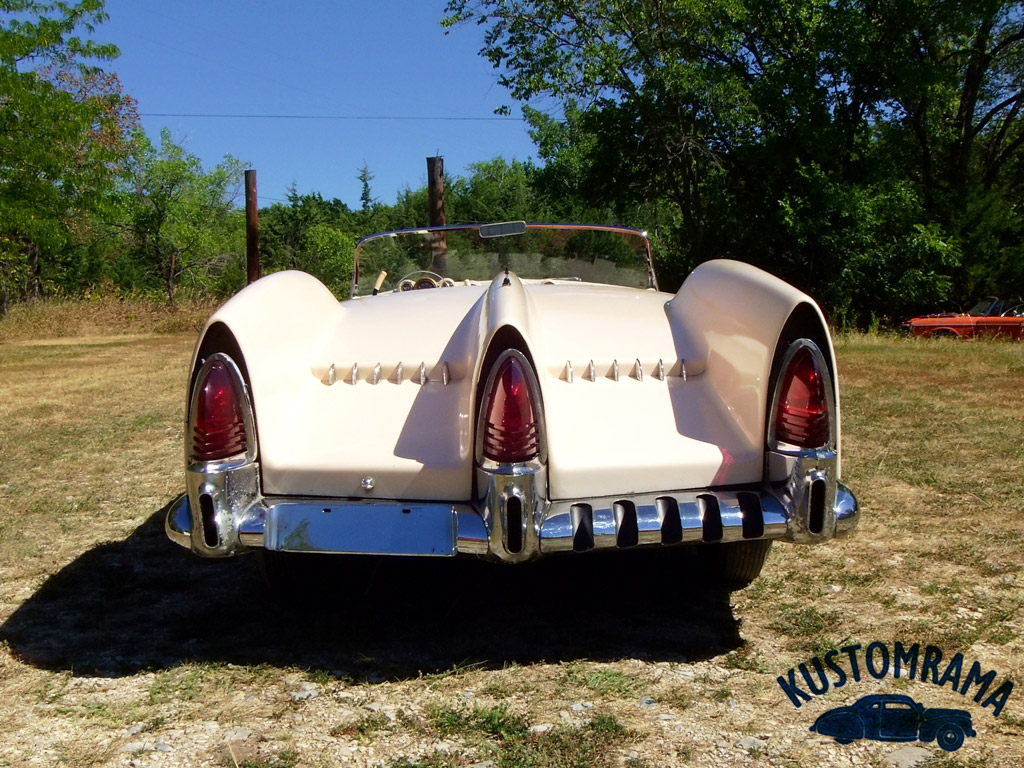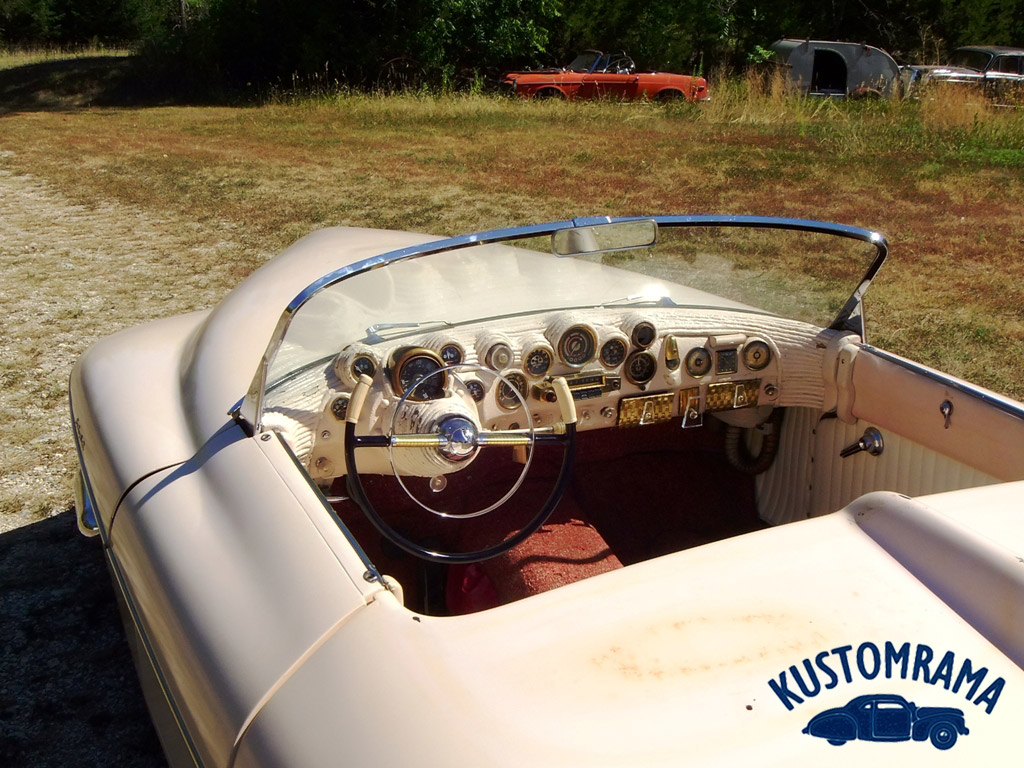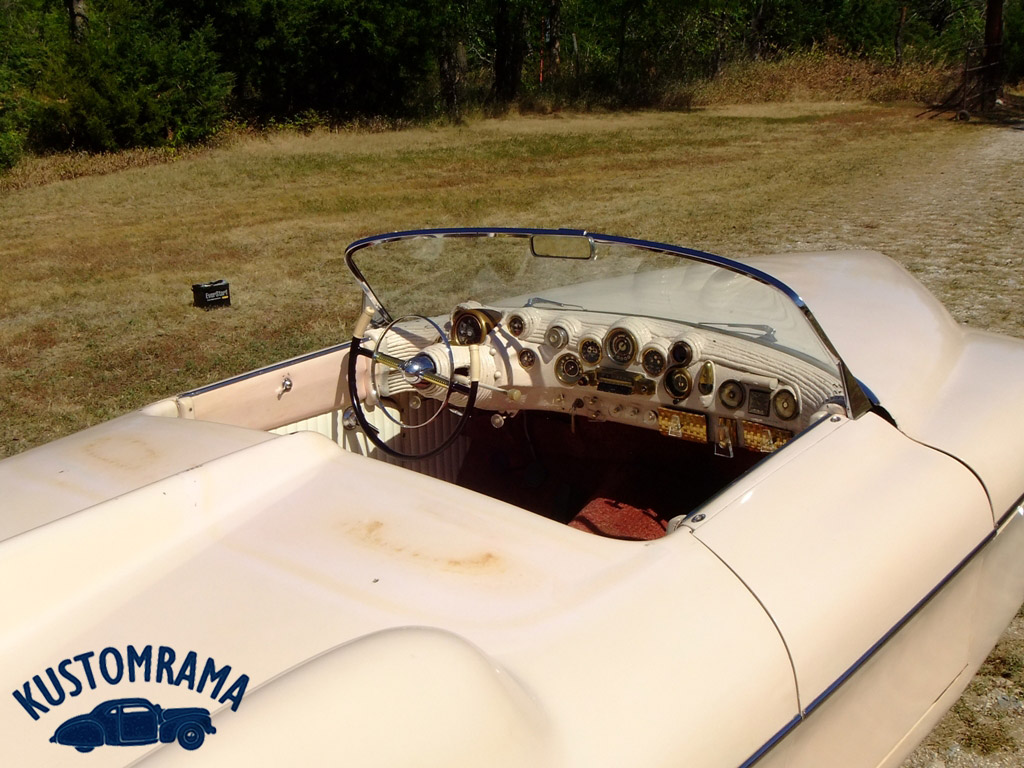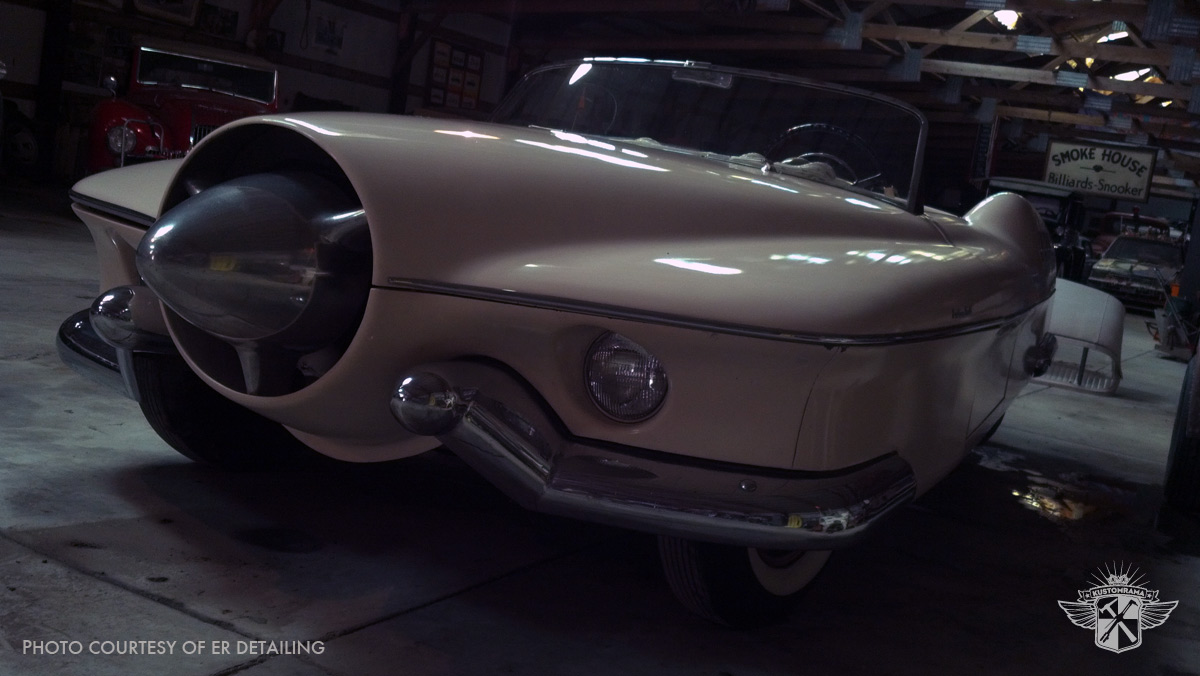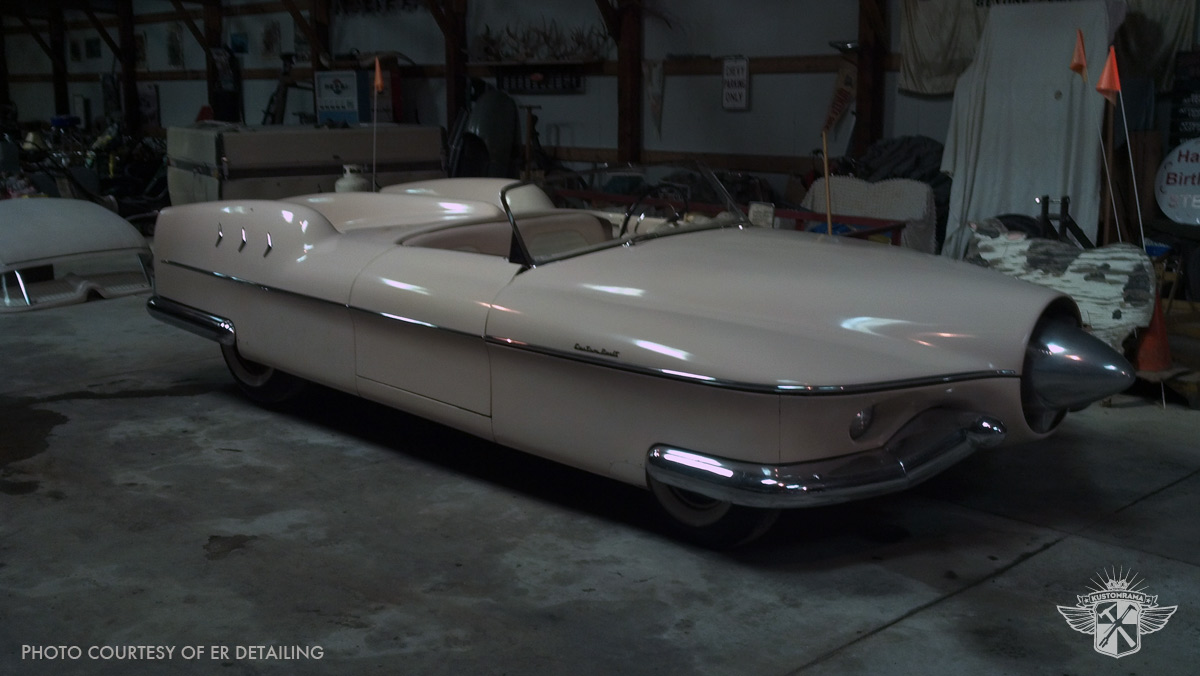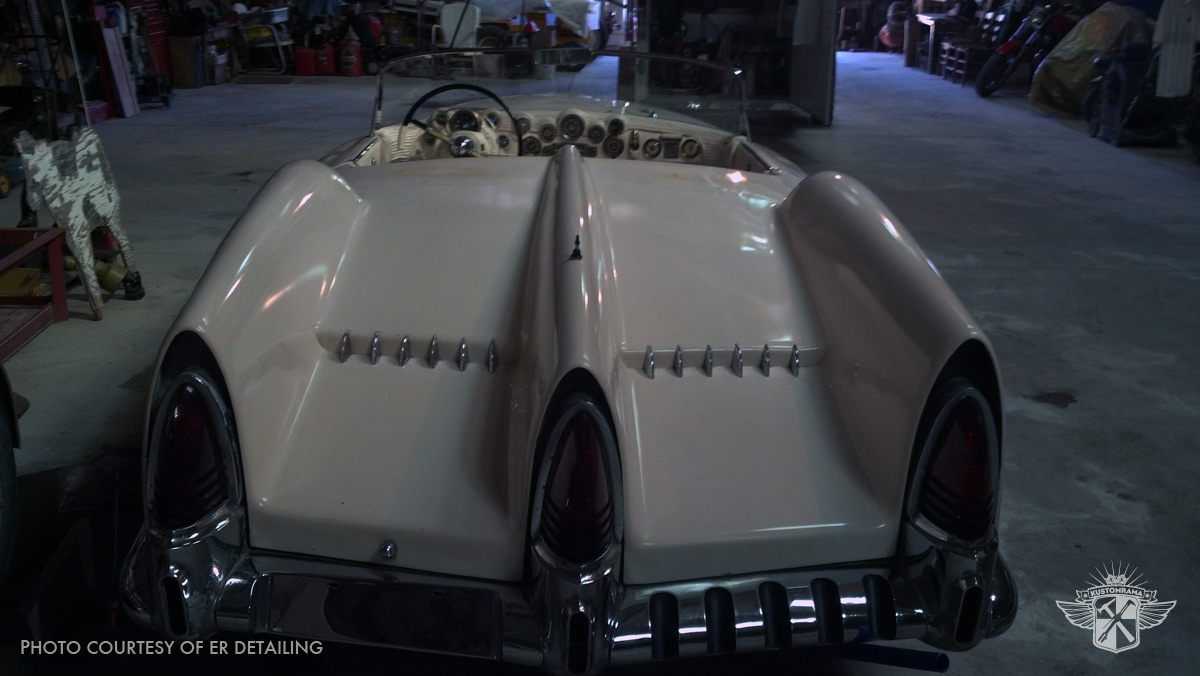The Manta Ray is a fiberglass bodied Sport Custom built by Glen Hire and Vernon Antoine of Whittier, California. As many other futuristic builders of its time, the inspired Glen and Vernon when they designed their outrageous creation. Both Glen and Vernon worked for the North American Aviation Company, in the engineering and design department of the guided missile and jet aircraft divisions to be more specifically. The enthusiastic duo actually had plans for a small scale production of the Manta Ray. Something that never happened.
The car featured a handmade fiberglass body molded in 14 sections. Building the body was not an easy task at all. There were plenty og problems, like deciding how many body mounts they had to have, keeping the body contours within certain limitations so the shell could be removed from the mold and more. The body was constructed on a modified 1951 Studebaker chassis in Glen and Vernon’s garage. Power came from the stock 1951 Studebaker V8 engine that came with the donor car. Glen and vernon were more interested in the appearance of the car than performance, therefore the 1951 Studebaker engine and chassis were left alone. The frame side rails were shortened 3″ though. The bumpers were handmade out of Hudson parts, and the taillights came from a Lincoln. Once completed, the Manta Ray stood 40 inches high, had a 112 inch wheelbase and weighed 1000 pounds. The car featured Stewart-Warner instruments and a Plymouth speedometer grouped around a cone shaped steering wheel housing with a 1953 Lincoln steering wheel attached. It had no deck lid, but the seats could be tilted forward for storage. The gas tank filler neck was hidden under the center tail light. Upon completion, the car was painted a metallic golden shade of lacquer. It took 4200 hours of work to complete the build.
At an auto show in Los Angeles in 1954, Glenn and Vernon received a special trophy for the car, as well as a cash reward from a local newspaper for “Outstanding Creativeness and Engineering”. After the show, Leading L. A. auto dealer Bob Yeakel fell in love with the car after seeing it in person, and he was able to buy it from the duo.
In 1959 the car was sold to L.L. Lacer of Junction City, Kansas. By then the car was located in Topeka, Kansas. L.L, also known locally as Peanuts, traded the Manta Ray for a 1952 Morris, a 1952 Volkswagen and a 1953 Packard. The estimated price for these three cars at the time was about 600 dollars.
References:
- Rod & Custom February 1954
- Popular Science March 1954

